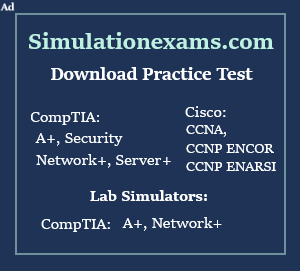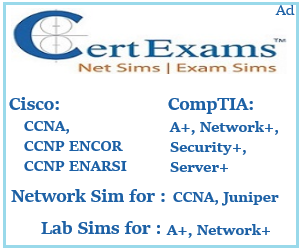ADSL modem/router manufacturers
The following manufacturers supply retail ADSL modems/routers:
- Alcatel
- Cisco Systems, Linksys
- D-Link
- Draytek
- Dynalink
- Netcomm
- Netgear
- Puretek, and others
4. Wireless broadband
a. Wi-Fi
Wi-Fi creates a network in your home or office - a little
zone where computers can get broadband Internet. It uses radio
waves, just like TV or mobile phones. You may sometimes hear
this zone referred to as a WLAN (Wireless Local Area Network).
A device called a wireless transmitter receives information
from the Internet via your broadband connection. The transmitter
converts the information into a radio signal and sends it.
You could think of the transmitter as a mini radio station,
broadcasting signals sent from the Internet. The 'audience'
for these transmissions is the computer (or computers, as more
than one can connect at the same time), which receives the radio
signal via something called a wireless adapter.
The whole process, meanwhile, works in reverse, with the
computer sending information to the wireless transmitter. It
then converts them and sends them via your broadband connection.
To use Wi-Fi you will need certain equipment:
- A wireless transmitter, also known as a Wireless Access
Point (WAP)
- A Wi-Fi adapter on every computer that will use Wi-Fi
b. WiMAX
WiMAX is an IP based, wireless broadband access technology
that provides performance similar to 802.11/Wi-Fi networks with
the coverage and QOS (quality of service) of cellular networks.
WiMAX is also an acronym meaning "Worldwide Interoperability
for Microwave Access (WiMAX).
WiMAX is a wireless digital communications system, also known
as IEEE 802.16, which is intended for wireless "metropolitan
area networks". WiMAX can provide broadband wireless access
(BWA) up to 30 miles (50 km) for fixed stations, and 3 - 10
miles (5 - 15 km) for mobile stations. In contrast, the WiFi/802.11
wireless local area network standard is limited in most cases
to only 100 - 300 feet (30 - 100m).
With WiMAX, Wi-Fi like data rates are easily supported, but
the issue of interference is lessened. WiMAX operates on both
licensed and non-licensed frequencies, providing a regulated
environment and viable economic model for wireless carriers.
c. LTE (Long Term Evolution)
LTE, or long-term evolution, is a type of mobile broadband
that rivals WiMAX. Both services are IP-based and use a technology
called orthogonal frequency-division multiplexing (OFDM) access.
They also use a type of wireless technology that lets people
get high-speed Internet across coverage areas that span miles.
d. 3G(EDGE)
It refers to third generation of standard mobile phones and
mobile telecommunication services fulfilling the International
Mobile Telecommunication-2000 (IMT-2000) specifications by the
International Telecommunication Union.
3G technologies are intended for the true multimedia cell
phone typically called smart phones. It allows simultaneous
use of speech and data services and higher data rates it comes
with enhancements over previous wireless technologies, like
high-speed transmission, advanced multimedia access and global
roaming. 3G helps to simultaneously transfer both voice data
(a telephone call) and non-voice data (such as downloading information,
exchanging e-mail, and instant messaging).
e. 3.5G
The 3.5G solution promises a data download speed of up to
14Mbps (megabits per second) and an upload speed of up to 1.8Mbps.
Compared to that, the mere 384Kbps (kilobits per second) download,
and uploads up to 64Kbps that a 3G network now offer. 3.5G rely
on the new High-Speed Downlink Packet Access protocol, which
are responsible fast transfer speeds over those of 3G.
f. 4G
4G Technology is basically the extension in the 3G technologies
with more bandwidth and services offers in the 3G. 4G technologies
are the future technologies that are mostly in their maturity
period. The expectation for the 4G technologies is basically
the high quality audio/video streaming over end-to-end Internet
Protocol.
Note: Wireless technologies are discussed in tutorial
Cellular
phones and
WiMAX broadband.
5. Conclusion
DSL service provides broadband technology solutions to both
the small business and consumer to deliver the multimedia entertainment,
information, and services that are continually becoming a larger
part of both our workplace and home environments. DSL, through
its ability to provide high-speed Internet access over ordinary
telephone lines, gives phone companies new markets and new applications
for continued revenue growth by providing the means for fast,
reliable access to data and entertainment.
Although wireless networks are not a direct substitute for
wire line broadband connections; wireless networks may have
a disruptive effect in the broadband market.
For a comprehesive discussion on Wireless technologies, please
refer to the articles here:
https://www.tutorialsweb.com/wimax-info/index.htm
https://www.tutorialsweb.com/wimax/wimax.htm
6. References
a. https://www.wisegeek.com
b. https://kb.iu.edu
c. https://www.howstuffworks.com




